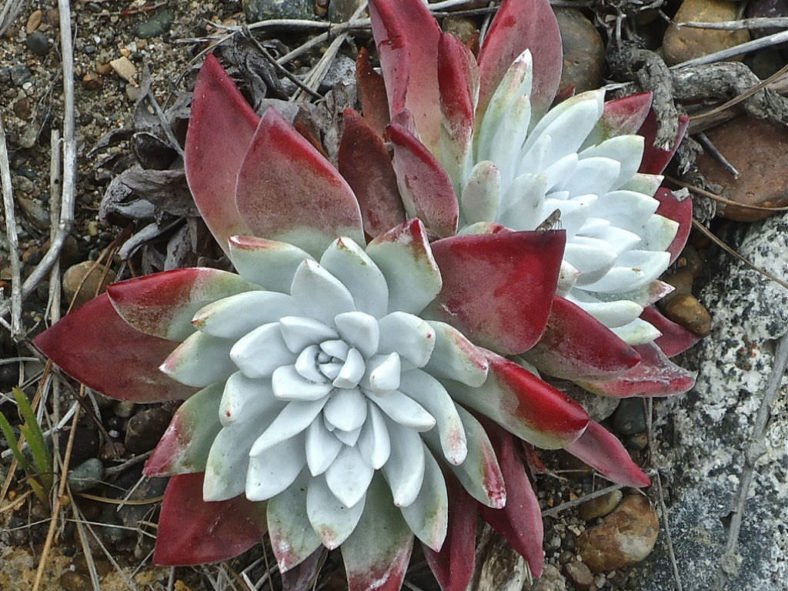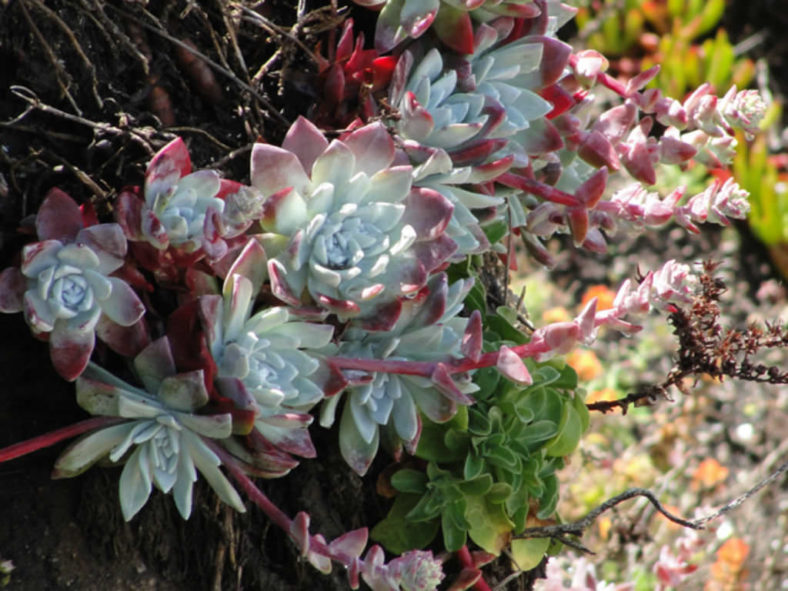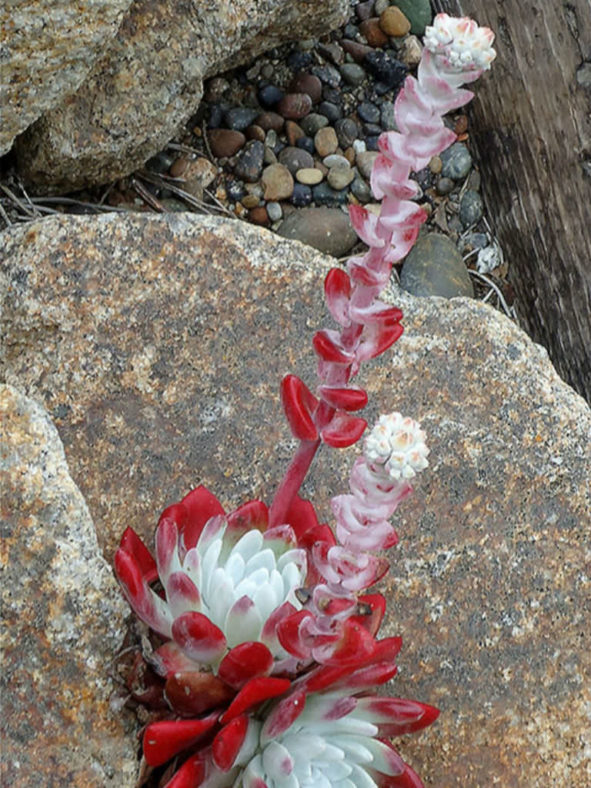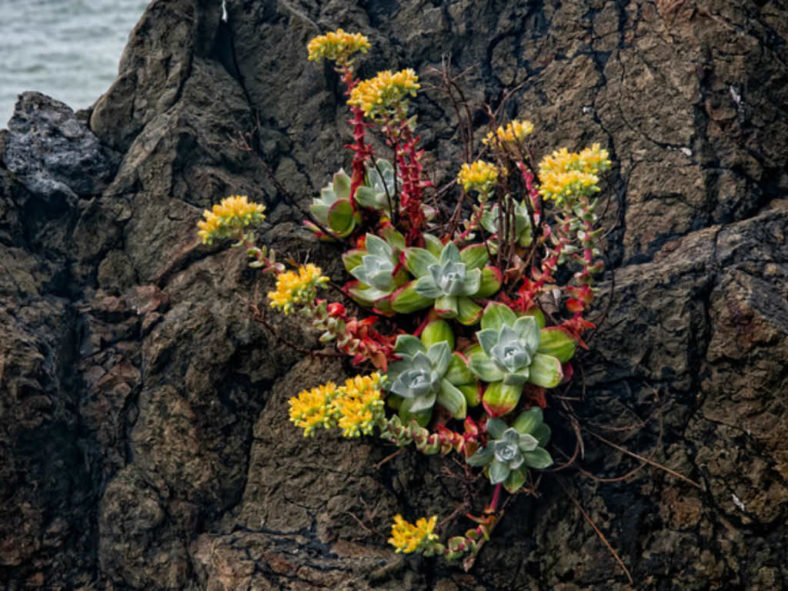Scientific Name
Dudleya farinosa (Lindl.) Britton & Rose
Common Name(s)
Bluff Lettuce, North Coast Dudleya, Powdery Dudleya, Powdery Liveforever, Sea-cliff Stonecrop, Sea Lettuce
Synonym(s)
Cotyledon farinosa, Echeveria farinosa
Scientific Classification
Family: Crassulaceae
Subfamily: Sempervivoideae
Tribe: Sedeae
Genus: Dudleya
Etymology
The specific epithet "farinosa (far-ih-NOH-suh)" means "floury, mealy" and refers to the floury coating on the leaves, buds, and fruit of this species.
Origin
Dudleya farinosa is native to the United States. It occurs along the coast of California and just into southern Oregon at elevations up to 490 feet (150 m).
Description
Dudleya farinosa is a much-branched succulent with thick, woody, often elongated stems (caudices) with a rosette of pointed, gray-green leaves at the tips. The stems can grow up to 24 inches (60 cm) long and 1.2 inches (3 cm) in diameter, at first erect, becoming decumbent or pendent as they grow and forming a clump. The older parts of the stem are typically not visible between the dried leaves. The rosettes can reach a diameter of 4 inches (10 cm). They divide in the center, and the two points eventually grow apart until they form two branches with their own rosettes. The leaves are usually strongly farinose or green and often have bright red edges and tips. They measure up to 2.4 inches (6 cm) long and 1 inch (2.5 cm) wide.
In summer, the rosettes produce erect, reddish flower stalks that reach up to 14 inches (35 cm) in height, have a few tiny leaflets at intervals, and are topped with a dense cluster of pale yellow flowers.

Hardiness
USDA hardiness zones 9a to 11b: from 20 °F (−6.7 °C) to 50 °F (+10 °C).
How to Grow and Care
Most of the various habitats Dudleyas occupy become dry in summer. Therefore, cutting off water to Dudleyas in your garden during the summer is important. Plants grown in sandy soils or containers are exceptions. They will accept infrequent summer watering as long as the soil drains well. The onset of fall or winter rains reawakens Dudleyas from drought-induced dormancy. Their shriveled leaves plump up quickly, growth resumes, and flowering occurs during the next spring or summer. These plants are amazingly resilient. If a portion of a colony sloughs off a cliff face or is uprooted by a burrowing animal, it can persist for months until soil contact is re-established. Species that naturally grow on ocean bluffs are also salt-spray tolerant.
Dudleyas have their share of disease and pest problems. If you can prevent Argentine Ants from introducing mealybugs or aphids to your Dudleyas, they will be healthier. Mealybugs nestle in the deep recesses of the leaves, and their feeding weakens the plants.
See more at How to Grow and Care for Dudleya.
Links
- Back to genus Dudleya
- Succupedia: Browse succulents by Scientific Name, Common Name, Genus, Family, USDA Hardiness Zone, Origin, or cacti by Genus
Photo Gallery
Click on a photo to see a larger version.


